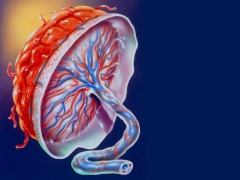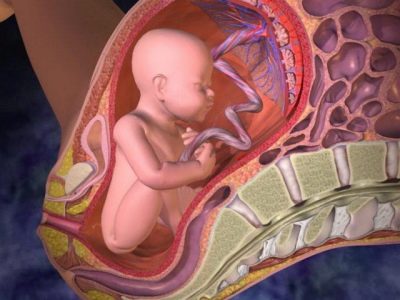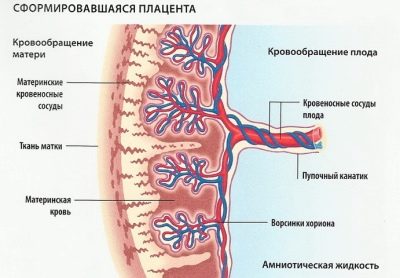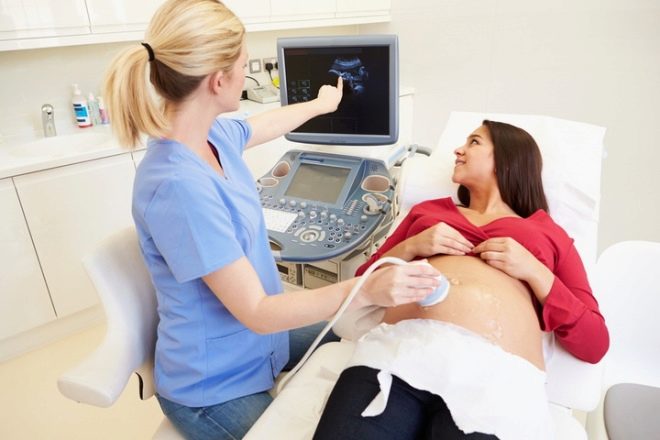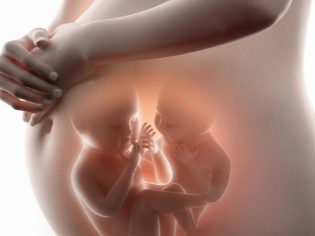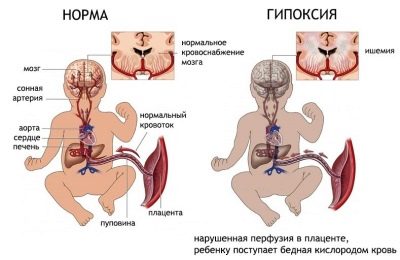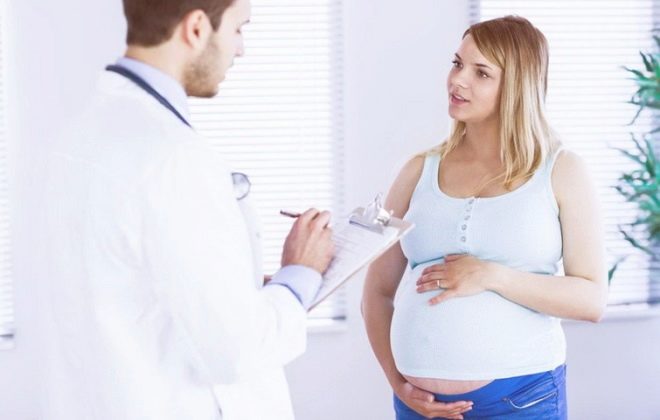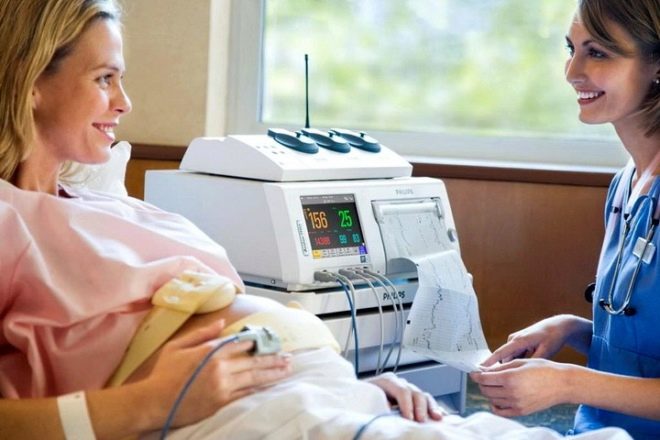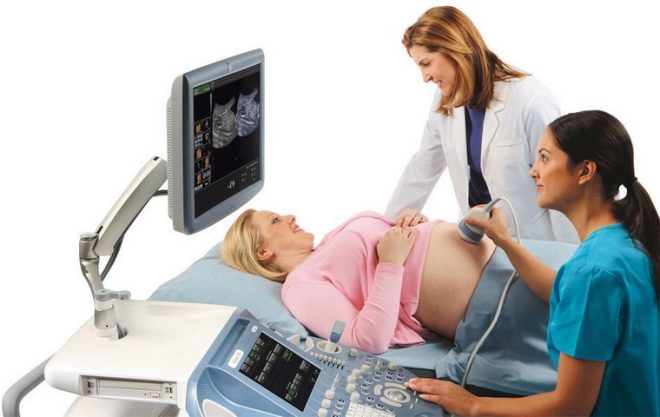Placental maturity by week: degrees and rates
During the second and third trimester, doctors with ultrasound diagnostics necessarily determine the degree of maturity of the placenta. Not every future mother imagines what is being said, and this is a very important indicator when carrying a baby. In this article we will tell you what the degree of maturity of the “children's place” is and what it should be normal for at different times.
What it is?
The placenta is a temporary organ, its tasks and functions are limited to the gestational age, and there is no need after the birth of the baby in the “children's place”. But in the period of carrying the baby without the placenta can not do - it protects the child, provides him with access to oxygen, vitamins, water, minerals, removes to the mother's body the baby's waste products, carbon dioxide, produces many hormones that are necessary for carrying the baby and preparing dairy glands of women to breastfeed. Even the slightest disturbance in the activity of the placenta can have very serious consequences for the health or life of the child and his mother.
The placenta does not appear immediately after conception, it forms gradually. Approximately 8 days after fertilization, the egg, which has become a blastocyst, sinks into the uterus, where it will have to consolidate on one of the walls, tightly growing into the endometrium by villi. Chorion in place of ingrowth and is the precursor of the future placenta. From this moment begins the formation of the "children's place".
By 12-14 weeks of pregnancy, the young placenta begins to function, but still does not have certain outlined forms. The final form of the placenta gets to 18-20 weeks of pregnancy. The growth of the “baby seat” continues until the middle of the second trimester, after which the placenta no longer grows.
By the birth of a temporary organ of life support growing in the womb of the child gradually loses its function, "aging", producing a resource. The aging process is monitored by doctors on ultrasound and is evaluated in terms of maturity. If the placenta for some reason begins to age prematurely, the baby will not receive enough oxygen and nutrition, its development may slow down, and hypoxia associated with a lack of oxygen may cause irreversible processes in its nervous system, brain, musculoskeletal system, and also cause prenatal death of the baby.
The young placenta is constantly increasing its thickness, expanding with new blood vessels. In the second half of pregnancy, growth stops, the placenta retains its thickness for some time, and then becomes not spongy, as at first, but more dense due to the deposition of calcium. The functionality of the “children's place” is also fading away gradually.
Degrees of maturity
There are four degrees of maturity of the “children's place”. Zero degree corresponds to the initial stage of functioning of the placenta. If the doctor claims that the degree of maturity is 0, this means that the “children's place” is young, full of strength and opportunities and fully provides the child with everything necessary for his growth and further development.
The first degree of maturity means that changes have already begun in the placenta - it has ceased to grow and increase in thickness. On ultrasound, this placenta is defined as flat, with a slight wave-like membrane and single echogenic inclusions.
The second degree speaks of pronounced degenerative processes. In some places, the placenta can become thinner, denser, salt deposits become apparent to the ultrasound doctor. The recesses in the membrane become more visible.
The third stage of maturity is a perfectly mature placenta. On ultrasound, its visual division into lobes is noticeable, the membrane is covered with deep grooves, the structure changes - salt deposits become more extensive, echogenic areas on the ultrasound monitor merge with each other into more extensive areas.
In addition, there are intermediate stages. For example, a woman may be given a 0-1 degree of maturity of the placenta or a 1-2 degree based on ultrasound results. This means that during a visual examination, the doctor discovered signs of a transition from one basic degree to another, but this transition was not yet complete.
Norms
Normally, before the 30th week of pregnancy, the woman should determine the zero degree of maturity of the “children's place”. After week 27, a 0–1 transitional degree can also be determined, and it will be considered conditionally normal if there are no other complications of pregnancy, for example, placenta or regional position of the placenta. Before the beginning of the third trimester, the placenta in healthy and normal pregnancy is considered immature.
From 30 to 34 weeks the first degree of maturity of the “children's place” is usually observed. If during this period 1-2 degrees are detected on ultrasound, this is regarded as an unequivocal pathology - premature aging. The dynamics of aging of the placenta for weeks then proceeds more intensively. From 35 to 38 weeks in women, the second degree of maturity is normally diagnosed, and after 38 weeks - a transient 2-3 degree.
Shortly before giving birth, an ultrasound can be used to determine the third degree and this should not be a reason for experiencing - all processes, if they are timely, are compensated in the human body, and therefore the mature placenta copes with its responsibilities if the woman, for example, 39 -40 week of pregnancy.
To imagine the aging process of the placenta during a normal, uncomplicated pregnancy more clearly, see how it looks in the table.
Table of the standard values of the degree of maturity of the placenta by week
Gestational week | The degree of maturity of the placenta |
12-30 | 0 |
27-30 | 0-1 |
30-34 | 1 |
35-38 | 2 |
38-40 (41, 42, 43) | 2-3 or 3 |
Causes of Premature Aging
If the placenta ages in terms established in obstetrics, then aging is called physiological, that is, quite natural. If the “children's place” has matured prematurely, it is a question of premature aging of the placenta, and this is a very disturbing pathology requiring mandatory medical care.
The reasons for the premature ripening of the "children's place" may be different. Most often this happens in pregnant women who could not or did not want at least for the time of carrying a fetus to give up bad habits - smoking and addiction to alcohol. Also at risk for premature maturation of the placenta are women who have had the opportunity to transfer infectious diseases during pregnancy, including ARVI and influenza.
Quite often, the placenta ages prematurely in women with a negative Rh factor, bearing their Rh-positive babies against the background of a developed Rh-conflict, as indicated by the antibody titer in the blood of a pregnant woman. Early aging of the “children's place” often accompanies pregnancy in women with diabetes, as well as those who are accustomed to taking medication for any reason without consulting the doctor.
In the area of risk and future mothers who are exposed to harmful substances (household chemicals, toxins, paints and varnishes, solvents) or radioactive radiation.Doctors tend to believe that the stage of maturation of the placenta flow faster than the normative periods for women living in large cities, where the ecological situation leaves much to be desired.
The factor of premature aging often depends on heredity - the daughter risks repeating the pregnancy scenario of her mother. Certain anomalies of the structure of the placenta itself, which were formed during the laying of this temporary organ, can also be the cause of aging.
Also, the most common causes of premature aging of the "children's place" are considered:
- preeclampsia, late toxicosis in the future mother;
- hypertension, drops in blood pressure;
- the presence of evidence of detachment at different stages of pregnancy, placenta previa;
- multiple pregnancy;
- hormonal disorders in the body of the future mother.
Causes of pathological immaturity
Another abnormality is pathological placental immaturity. It is much less common, but is no less dangerous. If a woman has 35 weeks of pregnancy, and the placenta remains immature and 0 or 0-1 degree is determined by ultrasound, then the doctor has every reason to believe that such a “baby seat” also does not cope with the functions assigned to it by nature.
An immature placenta cannot provide the growing baby with the necessary amount of oxygen and nutrients, which leads to the birth of a baby with low weight and developmental delay, as well as fetal hypoxia.
As the baby grows, the placenta and the umbilical cord “pump” more and more blood from the baby with metabolic products and to it - enriched with oxygen and vitamins. An immature placenta cannot provide uninterrupted blood flow in this mode. It retains the waste products of the crumbs, as well as carbon dioxide, which negatively affects the state of the child and the health of the placenta itself.
Forecasts are less favorable than with premature aging of the placenta, since it is not always medicine that can affect the maturation processes of this temporary organ. Stillbirth is not excluded, as well as the birth of children with severe mental disabilities, paresis and paralysis, disorders of the central nervous system due to chronic hypoxia during pregnancy.
The reasons that can lead to slow maturation and development of the placenta are also quite diverse. Most often, such a violation occurs in women who had diabetes mellitus before pregnancy, as well as in future mothers who were diagnosed with gestational diabetes during pregnancy. Smokers and drunk pregnant women are second in the list of probable patients diagnosed with pathological placental immaturity.
Nicotine and alcohol, especially with systematic use, slow down the natural processes and suppress the production of the necessary sex hormones.
An immature “baby seat” is often diagnosed in women who are carrying a child against the background of exacerbation of chronic diseases of the liver, kidneys, heart and blood vessels. Disorders of hemostasis (blood clotting) are also a risk factor.
If an unmatched placenta is detected, the woman should be recommended to undergo additional diagnostics aimed at establishing the risks of having a baby with chromosomal and genetic pathologies, as well as severe malformations of the internal organs. It is this "inhibited" behavior of the placenta that is characteristic of pregnancies by sick and terminally ill babies.
Treatment
First of all, a woman should calm down and pull herself together - nervous shocks and prolonged stress create no less dangerous prerequisites for placental pathologies than contact of a pregnant woman with chemicals or viral illnesses. In case of premature aging of the “children's place”, the doctor usually decides in favor of the hospitalization of the future mother in the gynecological hospital.If the gestational age has not exceeded 36 weeks, then she will be given preserving therapy and will monitor the condition of the baby.
For treatment, drugs are used to improve uteroplacental blood flow, as well as antispasmodics, so that the uterus less often comes to tone. Vitamin preparations for the baby are also introduced.
Women are recommended to take oxygen cocktails. The state of the placenta is carefully monitored, repeating ultrasound every few days with a mandatory assessment of the speed and intensity of blood flow in the uteroplacental vessels.
If the gestation at the time of the discovery of premature aging of the “baby site” exceeds 36 weeks, the doctor may suggest early delivery. This will depend on the specific situation and degree of maturity. Sometimes it is also the decision about hospitalization and daily monitoring of the child’s condition.
The expectant mother does CTG every day to make sure that the baby does not start showing signs of oxygen starvation. If such signs appear, preserving therapy is canceled and early delivery or cesarean section is performed.
If late maturation of the placenta is detected, if the degree of its maturity falls short of the norm, a woman is also recommended a stationary regime. Treatment is prescribed after establishing the absence of fetal malformations. If genetic tests or amniocentesis confirm that the baby is healthy and the expert ultrasound does not show signs of abnormalities in the structure of his organs, then the treatment is the same as with premature aging - vitamins, drugs to improve blood flow in the uterus and placenta, as well as light sedatives to calm.
If the child is ill, the woman is asked to terminate the pregnancy. With the refusal of the baby retain the standard therapy.
If hormonal imbalances become the cause of immaturity, a woman may be recommended hormone treatment, which should accelerate the growth of placental tissue and the expansion of blood vessels in it.
The specific drug and dosage is determined by the attending physician, it is desirable to undergo such treatment under the supervision of specialists in the hospital.
The condition of the baby is also monitored by ultrasound, ultrasound and CTG (after 28-30 weeks). Upon detection of signs indicating pronounced discomfort and suffering of the baby in the womb, the decision on early delivery is also made to save the children's life. Usually, a cesarean section is performed and subsequently a premature baby is nursed with the assistance of experienced neonatologists in well-equipped reanimation.
What is considered a deviation?
Deviation should be considered a significant difference in the state of the placenta of the pregnant from the standard values. If a woman has 30 weeks gestation, and an ultrasound scan showed a 0-1 degree of maturity of the “baby seat”, this is a conditional norm. And if the degree is already the first or the first or second, then the woman needs to go to the hospital as soon as possible to begin treatment.
The most stringent requirements are imposed on standards at the transition of 1-2 and 2-3 degrees. At grade 1–2, the baby usually cannot live on its own or can be born very prematurely. Saving such a baby from the mother's womb, where he lacks nutrition and oxygen, doctors are at risk, because a crumb can not survive because of its own immaturity and lack of readiness for life in this world.
Any deviation should be assessed by the doctor, not the pregnant woman herself. Only the doctor will tell you in what situation and under what accompanying diagnoses the degree of maturity will be the norm or will be pathological. The decision is also made taking into account the individual characteristics of the gestational period.
Prevention
Not always a woman can affect the processes occurring in the placenta, but it can completely reduce the risks of its premature aging or pathological immaturity. To do this, you must give up bad habits, do not drink pills and syrups without the knowledge of the doctor, and also eat properly and balanced and breathe more fresh air. Harmful chemicals should be removed away.
About the degree of maturity of the placenta for weeks, see the following video.
